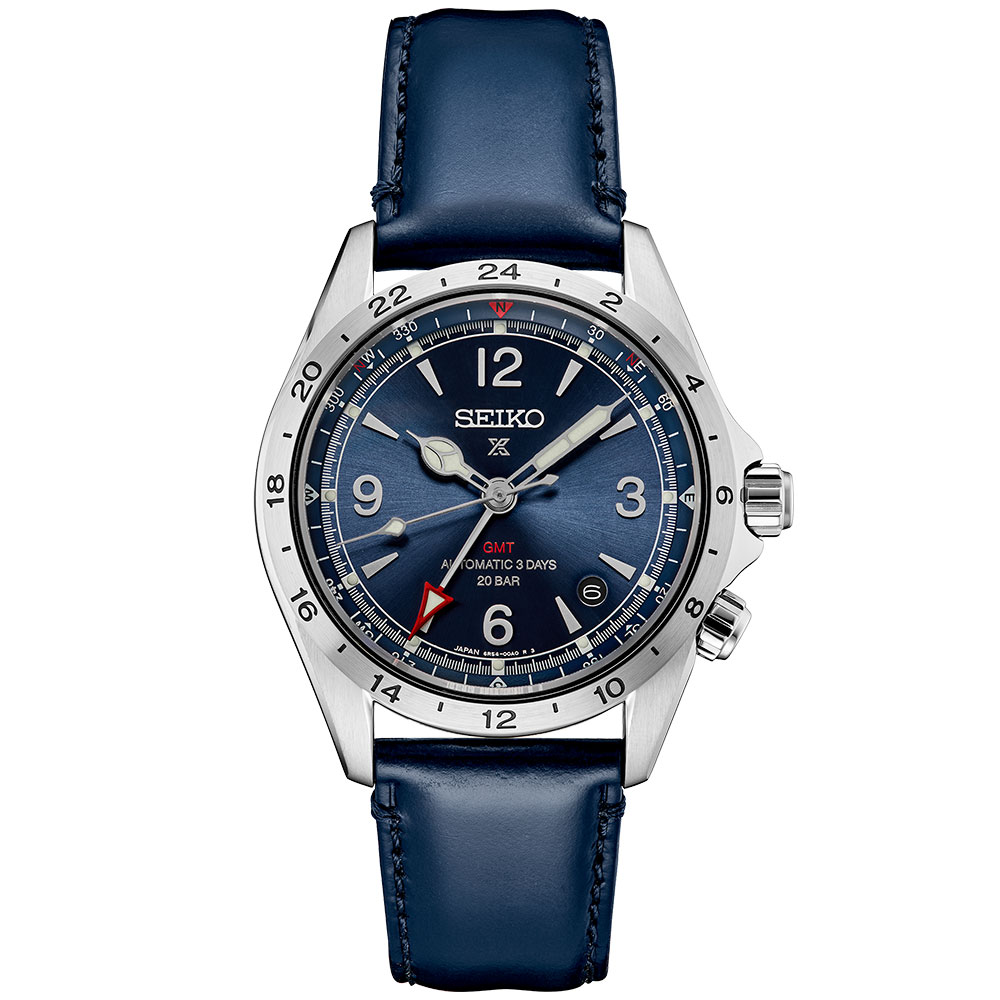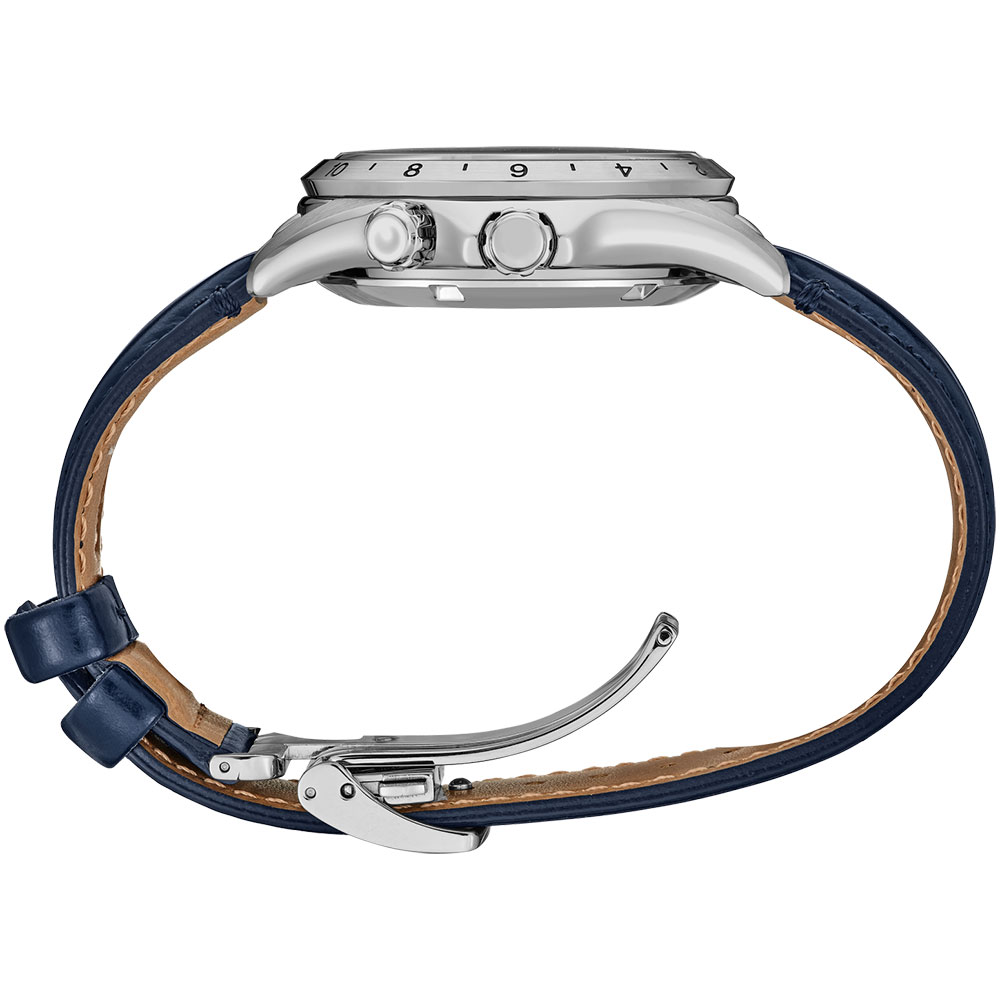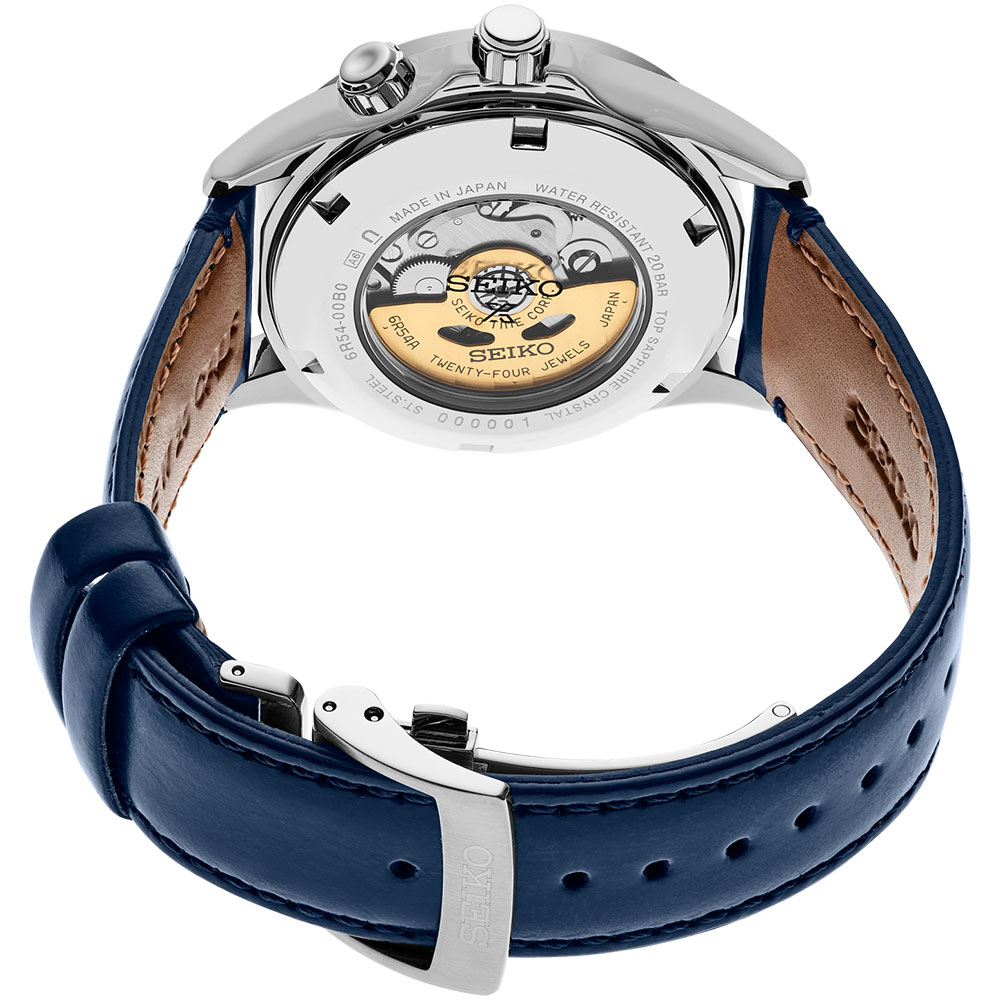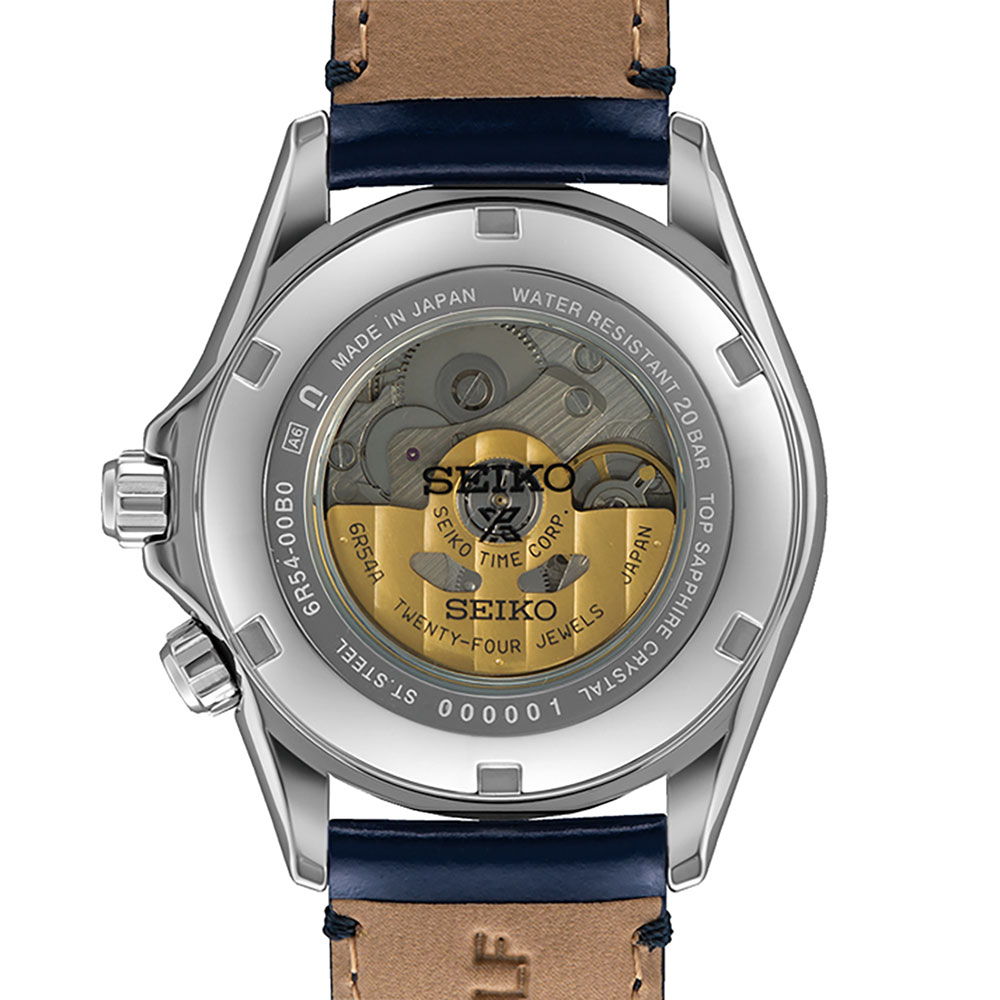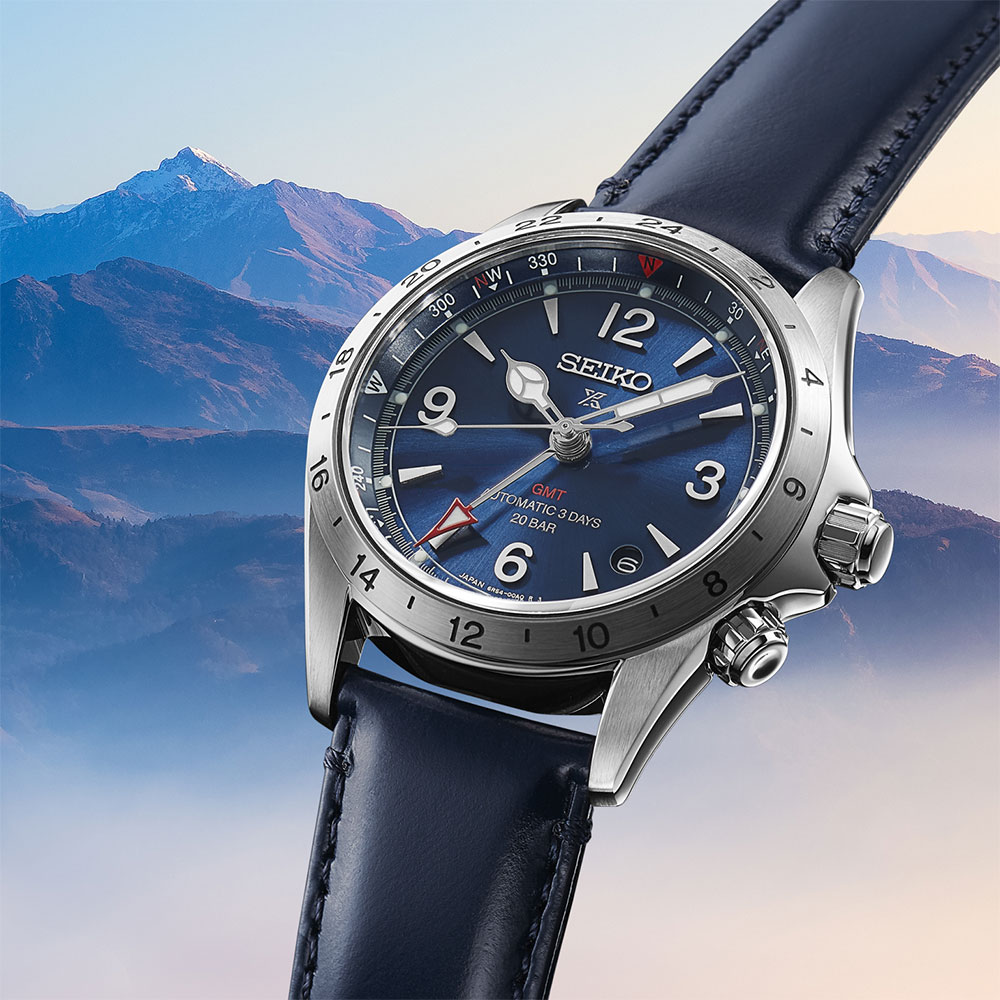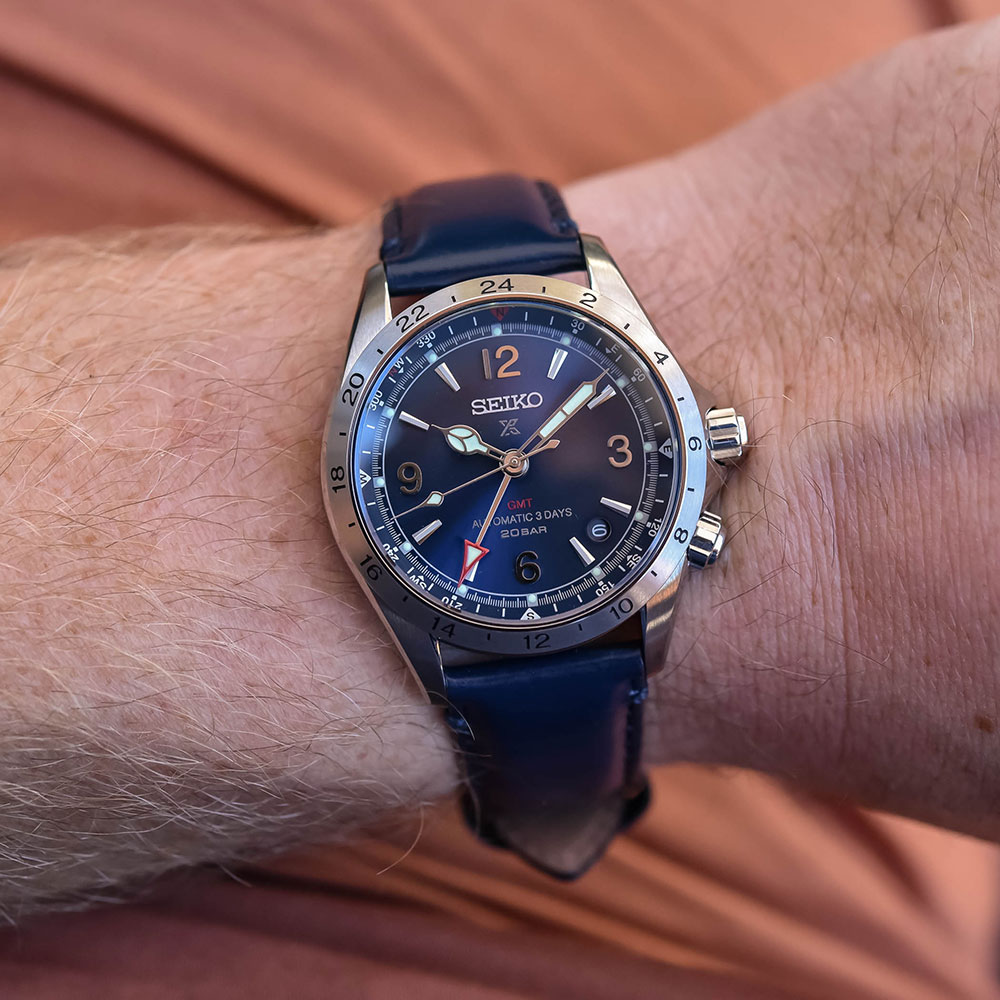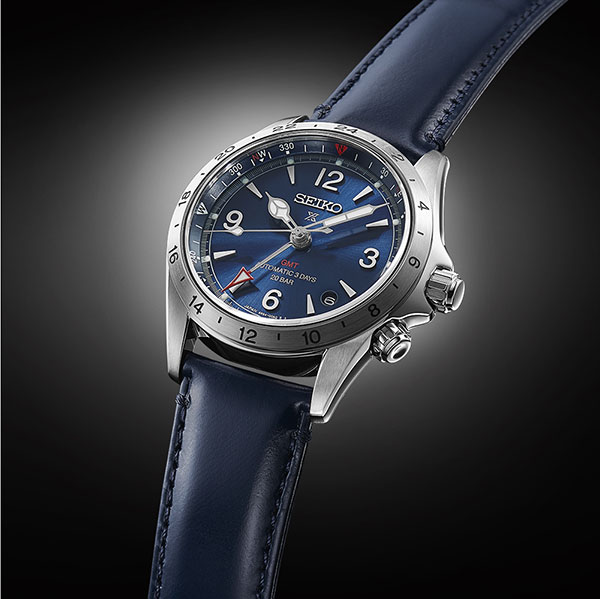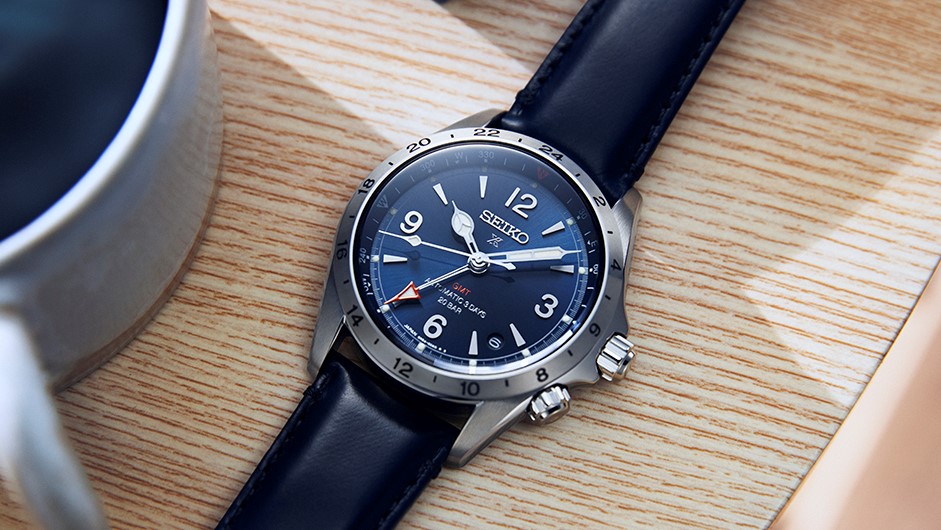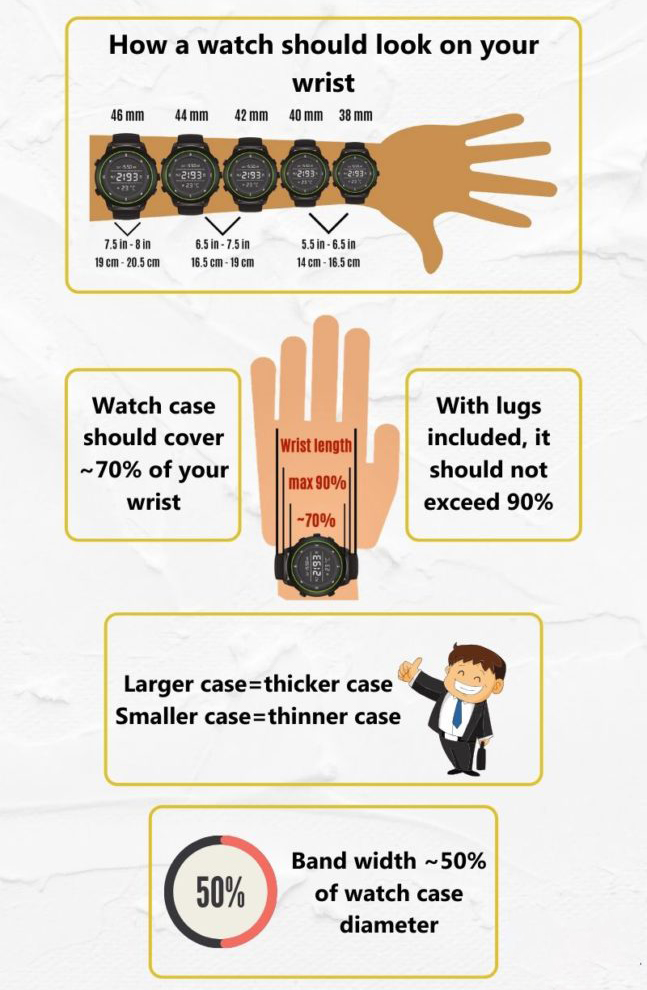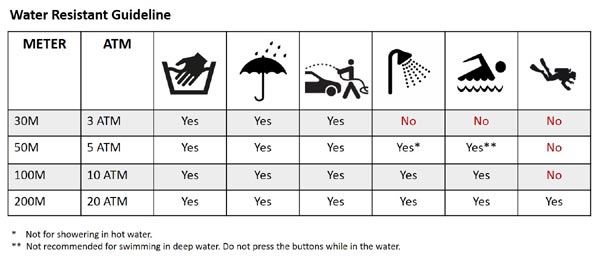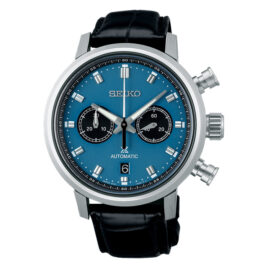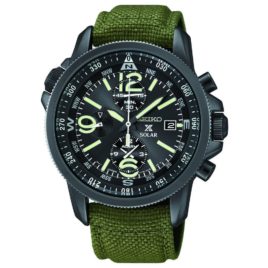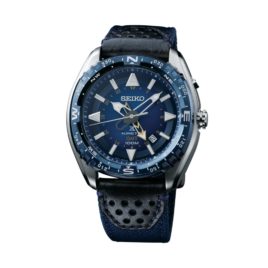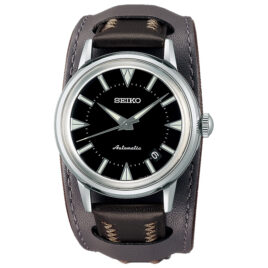Description
SEIKO Prospex SPB377 Specifications
| Feature |
| ||
|---|---|---|---|
| Driving system | Automatic with manual winding capacity | ||
| Caliber Number | 6R54 | ||
| Case material | Stainless steel with super hard coating | ||
| Case back | Transparent | ||
| Band type | Strap | ||
| Band material | Calfskin leather | ||
| Band color | Blue | ||
| Band width | 20 mm | ||
| Clasp | Push button with buckle | ||
| Dial color | Blue sunray brushed with raised hour markers and numerals | ||
| Glass material | Curved sapphire crystal with anti-reflective coating on inner surface | ||
| Hands | Luminous dots for the hours, cathedral minute, second hands with red arrow-shaped GMT 24-hour hand | ||
| Dial markers | Luminous indexes with arabic number at 3, 6, 9 and 12 o’clock position | ||
| Second markers | Minutes markers around the outer rim | ||
| Lumi Brite | Hands and indexes | ||
| Bezel | Fixed 24-hour GMT stainless steel with rotating inner compass | ||
| Crown | Screw down at 3 o’clock position | ||
| Calendar | Date display between 4 and 5 o’clock position | ||
| Function | Date, hour, minute, second, stop second hand, GMT 24-hour dual time | ||
| Accuracy | -15 to +25 seconds per day | ||
| Vibration | 21,600 vibrations per hour (6 beats per second) | ||
| Drive duration | Power reserve approximately 72 hours (3 days) | ||
| Magnetic resistance | 4,800 A/m | ||
| Water resistance | 20 bar water resistance (200 meters / 660 feet) | ||
| Size | Diameter 39.5 mm x Thickness 13.6 mm | ||
| Lug to lug | 46.4 mm | ||
| Weight | 150 g |
SEIKO Prospex SPB377 Features
Caliber 6R54
The new Caliber 6R54, which has a power reserve of three full days, powers the new Seiko Prospex Alpinist Mechanical GMT.
High legibility
The 24-hour display on the bezel and the 24-hour hand with red tip guarantee the legibility of the GMT function.
- Date display
- 24 jewels
- Screw case back
- Screw-down crown
- See-through case back
- GMT 24-hour dual time function
History of Seiko
The company was founded in 1881, when Kintarō Hattori opened a watch and jewerly shop called “K. Hattori” (服部時計店 Hattori Tokeiten) in the Ginza area of Tokyo, Japan. Eleven years later, in 1892, he began to produce clocks under the name Seikosha, meaning roughly “House of Exquisite Workmanship”.
The first watches produced under the Seiko brand appeared in 1924. In 1969, Seiko introduced the Astron, the world’s first production quartz watch, it cost the same as a medium-sized car. Seiko later went on to introduce the first quartz chronograph.


